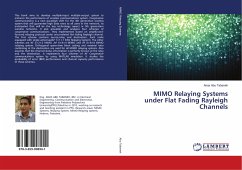In this work, the performance of an OWC system has been evaluated using MATLAB. As a performance metric, BER and delay spread have been considered. It has been found from the literature, OWC system can provide data rate of few tera bit per second, but it can cover only few meters that is the range is short. Moreover the light beams are absorbed by the wall and ceiling. Thus we have improved the BER performance of the system by proposing the multi-beam transmitter where beam and angle of the each beam is adapted based on the channel state information. Here, we have proposed a new method of real-time beam and angle adaptation technique for OWC system using ANFIS. This NF controller has five layers and is trained with back-propagation gradient decent algorithm. The controller is trained with data obtained by simulations. Simulation results show that the proposed NF based OW spot-diffusing communication system outperforms other spot-beam diffusion method in terms of SNIR and delay spread. ANFIS model distributes power allocation by calculating delay spread in considering Doppler shift effect of the mobile devices.
Bitte wählen Sie Ihr Anliegen aus.
Rechnungen
Retourenschein anfordern
Bestellstatus
Storno








